PNRI Celebrates the 44th Atomic Energy Week
- Details
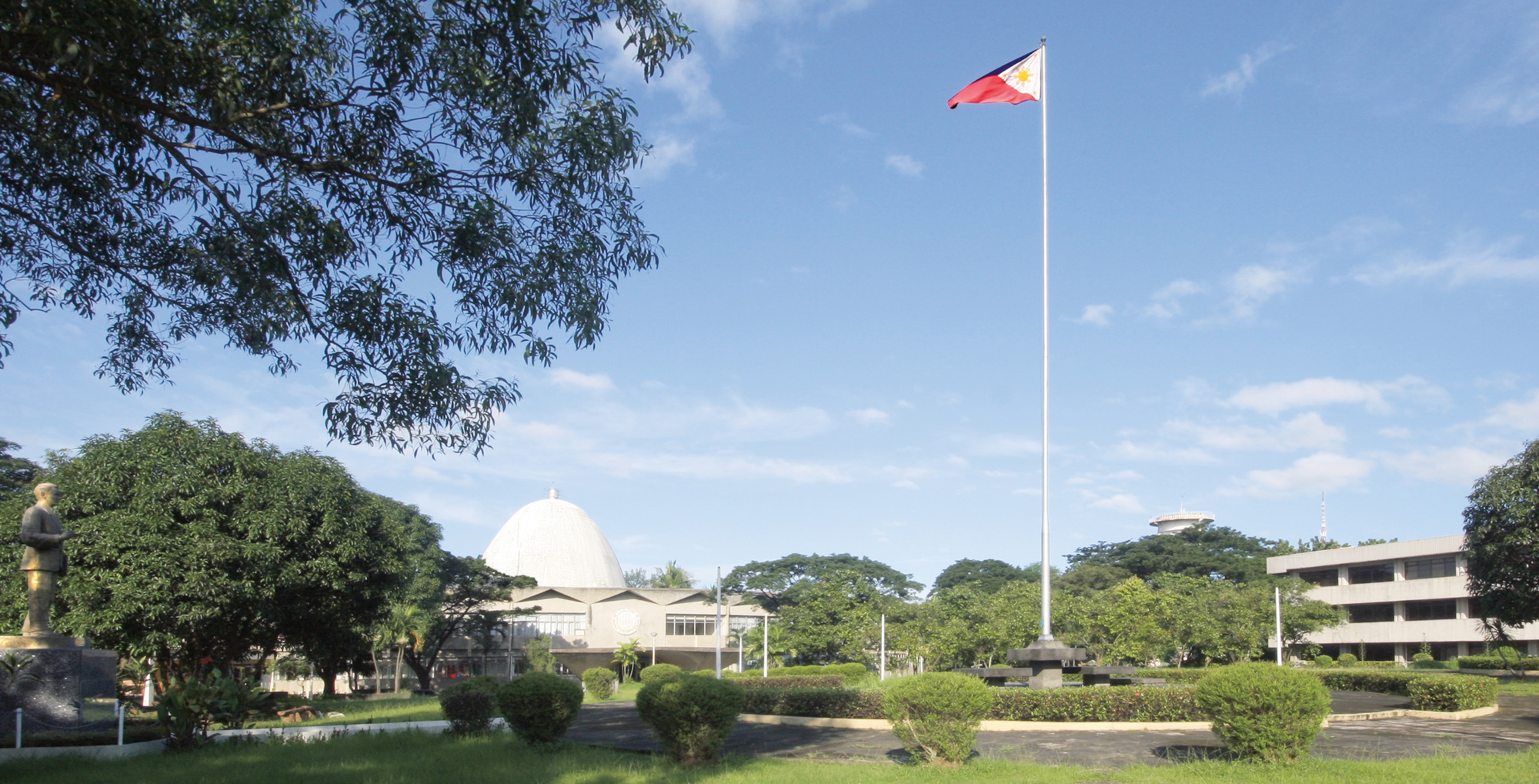

PNRI – DOST Features Advances in Nuclear Science and Technology in 44th Atomic Energy Week Celebration
The Philippine Nuclear Research Institute of the Department of Science and Technology (PNRI-DOST) will feature the latest advances in nuclear science and technology in the fields of agriculture, industry, medicine and the environment during its 44th Atomic Energy Week celebration on December 5 to 9, 2016 at the PNRI compound in Commonwealth, Diliman, Quezon City.
The activities for this year’s celebration will focus on the theme, “Teknolohiyang Nukleyar para sa Kaunlaran ni Juan”.
The Institute will provide free guided tours to the exhibits and selected PNRI facilities and laboratories to students, teachers, researchers, entrepreneurs, and the public during the five-day celebration.
Experts will give presentations during the technical sessions on the beneficial applications of nuclear science and technology on December 5 and 6.
One of the highlights of the 44th AEW celebration is the holding of the Philippine Nuclear Youth Summit (PNYS) on December 7. The PNYS will serve as a forum for the youth to share information and knowledge and offer high school and college students as well as young professionals a voice in the future and inspire them to pursue a career in nuclear science.
Teams of high-school students from public and private schools across the country will compete with their knowledge in nuclear science and other related topics during the national level competition of the Philippine Nuclear Science Quiz (PNSQ) for High School Students to be held on December 8 at the PNRI Auditorium.
As mandated under Presidential Proclamation No. 1211 in 1973, the annual AEW is celebrated every second week of December to help generate awareness of the Filipinos on the beneficial uses of nuclear science and technology.
For more information on the activities for the 44th Atomic Energy Week, please contact the PNRI Nuclear Information and Documentation Section at 920-8787 and 929-6011 to 19 local 286, or visit www.pnri.dost.gov.ph and the facebook page DOST – Philippne Nuclear Research Institute.
Contact person for this media release:
Justina S. Cerbolles
Information Officer
Nuclear Information and Documentation Section
Technology Diffusion Division
Philippine Nuclear Research Institute
Contact details
Telephone no. : 920-8787 and 929-6011 to 19 local 286
Email address : This email address is being protected from spambots. You need JavaScript enabled to view it.
Medical Professionals from the Provinces Study Radioisotope Applications
- Details
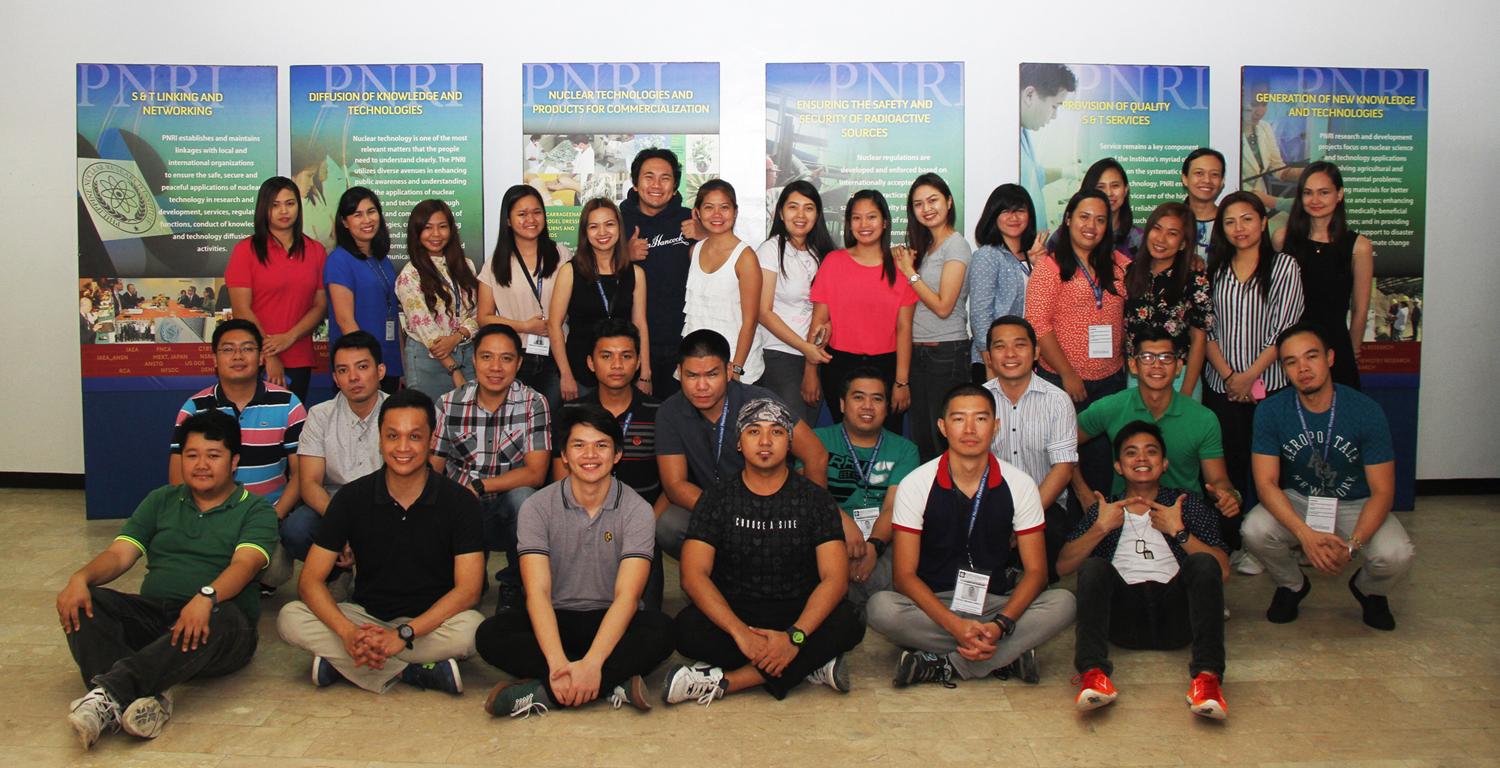
Participants of the 6th Course on Medical Use of Radioisotopes (CMR) and the 3rd Course on Radioisotope Techniques (CRT)
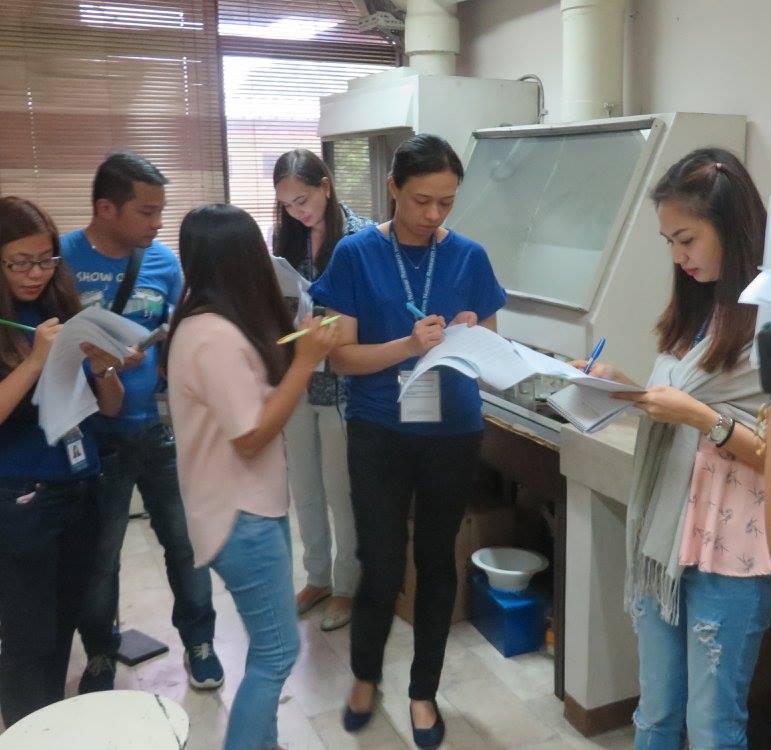
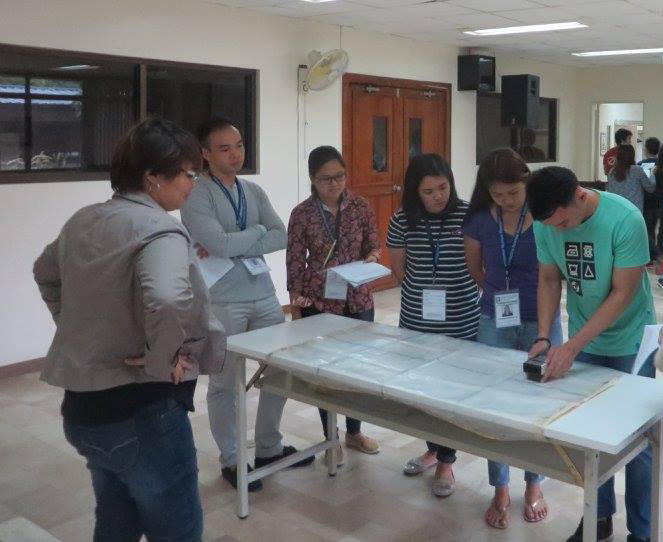
The trainees participate in an exercise on radiation survey and protection at the PNRI Nuclear Training Center
Medical Professionals from the Provinces Study Radioisotope Applications
Riding on the government’s thrust to bring progress to the country’s various regions, medical professionals from Mindanao, Visayas and other provinces beyond Metro Manila were among those who completed the 6th Course on Medical Use of Radioisotopes (CMR) and the 3rd Course on Radioisotope Technology (CRT) at the Department of Science and Technology – Philippine Nuclear Research Institute (DOST-PNRI) on 5-30 September 2016.
The training course was conducted by the PNRI Nuclear Training Center (NTC). Experts from PNRI and partner agencies lectured on nuclear science and technology on the use of radioisotopes in the medical field as well as the equally important aspect of radiation protection, nuclear safety and security.
Of the 27 trainees for the CMR, around half were from provincial hospitals and medical centers, many of which are either new or prospective licensees of PNRI. Participants came from major cities in Luzon, Visayas, Mindanao, and Metro Manila. Successful completion of the CMR is one of the requirements for designation as Radiation Safety Officer (RSO) , and consequently, for fulfilling of regulatory requirements for radiation safety in nuclear medical centers and hospitals.
Meanwhile, five researchers and staff members from PNRI participated in the CRT. While the CMR focuses on medical applications of nuclear and radiation technologies, CRT focuses on the nuclear applications in agriculture, industry, environment protection, healthcare, and research.
Common topics that were taught to participants in the CMR and CRT were nuclear physics, radiation chemistry, use of monitoring instruments, biological effects of ionizing radiation, basic principles of radiation protection and nuclear regulation.
Midway through the courses, separate classes were held for the CMR and the CRT. The medical course included lectures and demonstrations on calibration of monitoring instruments, radiation therapy, cellular radiobiology, radioimmunoassay, cytogenetics, radiopharmaceuticals, nuclear medicine, and positron emission tomography. On the other hand, the CRT participants learned about radiation and radioisotope applications in agriculture, industry, geology and environmental research, food irradiation and radiation processing of other products. The participants were also introduced to PNRI’s state-of-the-art equipment through experiments on gamma spectrometry, liquid scintillation counting, and x-ray fluorescence analysis.
Visits to the Philippine General Hospital, particularly its linear accelerator, radiation therapy and brachytherapy facilities and to several PNRI facilities, such as the semi-commercial Cobalt-60 Multipurpose Irradiation Facility, the Electron Beam Irradiation Facility, the Technetium-99m Generator Facility and the Philippine Research Reactor – 1, enhanced the learning experiences of the participants.
Formerly the Radioisotope Techniques Training Course (RTTC) with iterations for medical personnel and general training, the new CMR and CRT courses reflect PNRI’s continuing efforts to improve and update the knowledge and skills of professionals engaged in the use of radioisotopes in their respective fields. The first RTTC was held on April 1959, and was one of the first human resources development program in nuclear science and technology in the country.
At the course culmination, participants presented case studies which aim to assess the comprehension of knowledge gained in the course as applied to their particular practice.
Philippines Participates in Historic 60th General Conference of International Atomic Energy Agency in Vienna
- Details
From The Philippine Embassy/Permanent Mission in Vienna

DOST Undersecretary Rowena Cristina L. Guevara delivers the Philippine Statement during the 3rd Plenary Session of the 60th Session of the IAEA General Conference on 27 September 2016 (Photo from the Philippine Embassy/Permanent Mission in Vienna)

From Left: DOST Undersecretary Dr. Rowena Cristina L. Guevara, Ambassador Maria Zeneida Angara Collinson, IAEA Director General Yukiya Amano and PNRI Chemistry Research Section Head Dr. Lucille Abad (Photo from the Philippine Embassy/Permanent Mission in Vienna)
Philippines Participates in Historic 60th General Conference of International Atomic Energy Agency in Vienna
Hon. Dr. Rowena Cristina L. Guevara, Undersecretary of Science and Technology for Research and Development, and Ambassador Maria Zeneida Angara Collinson, Philippine Resident Representative to the IAEA led the Philippine delegation to the 60th Regular Session of the General Conference of the International Atomic Energy Agency (IAEA) and the related meetings held along the sidelines from 26 September to 30 September 2016.
Officials from the Philippine Permanent Mission in Vienna, Philippine Nuclear Research Institute, and Department of Education ensured active Philippine participation in the related meetings and side events.
Reading the Philippine Statement, Undersecretary Guevara cited several tangible contributions of the IAEA to the Philippines’ national development, particularly in the areas of food security, water management, health, environmental protection, education and capacity-building. She expressed the Philippines’ support as well for IAEA Director General Yukiya Amano’s candidature for a third term as IAEA Director General.
Read the full text here
Philippines Hosts Asian Educators to Bring Nuclear S&T to Secondary Schools
- Details
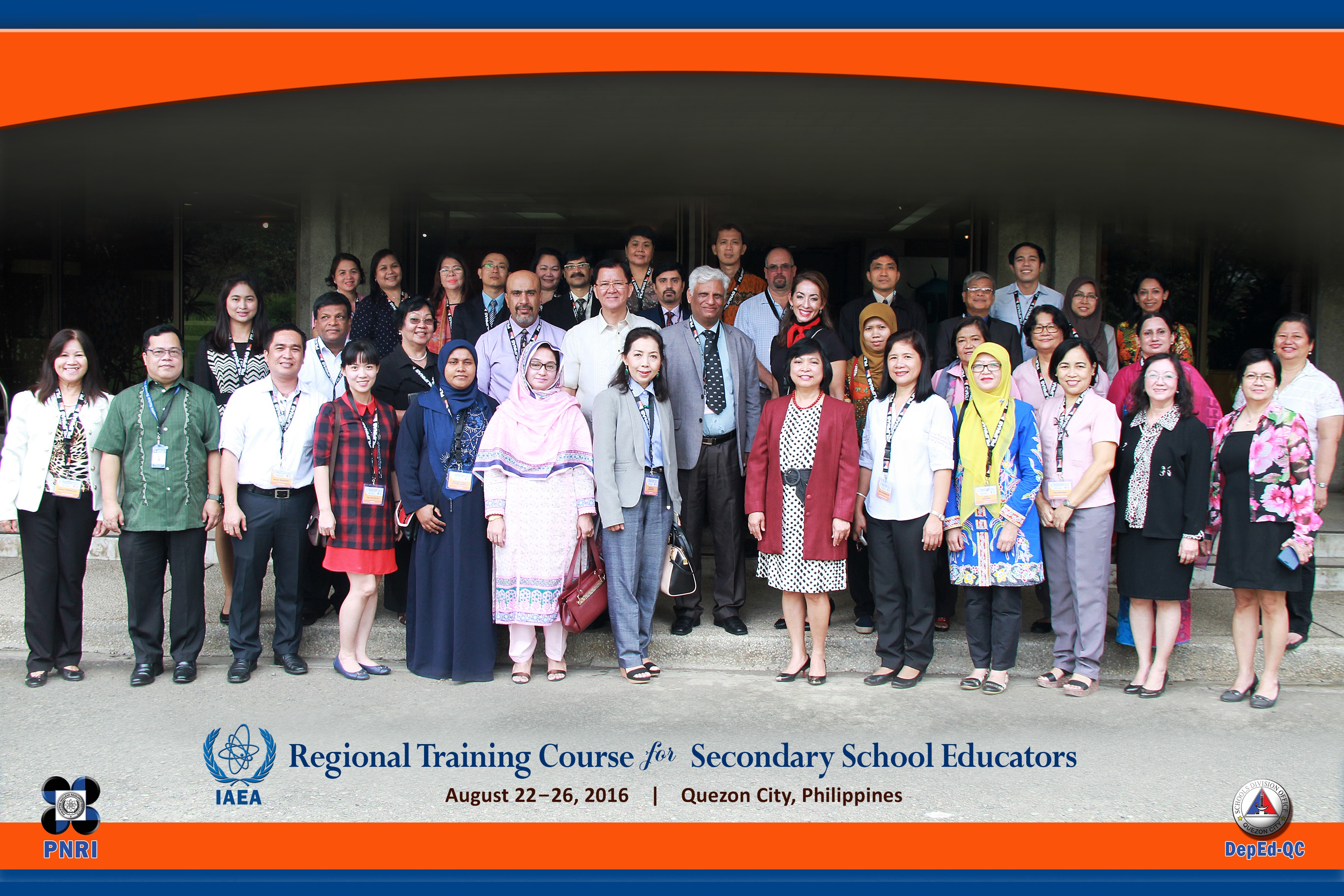
IAEA Technical Officer Dr. Sunil Sabharwal (2nd row, 6th from left), Dr. Valerie Segovia of the Nuclear Power Institute, Texas A&M University, USA (2nd row, 6th from right), Mr. Eko Supardyono from Indonesia (4th row, 3rd from left) DepEd-NCR Regional Director Dr. Ponciano Menguito (2nd row, 5th from left), DepEd-QC Science Education Supervisor Dr. Maria Violeta Tupas (2nd row, 3rd from left) and PNRI Officer-in-Charge, Office of the Deputy Director Dr. Soledad Castañeda (2nd row, 5th from left) with the participants and facilitators of the IAEA Regional Training Course for Secondary School Educators
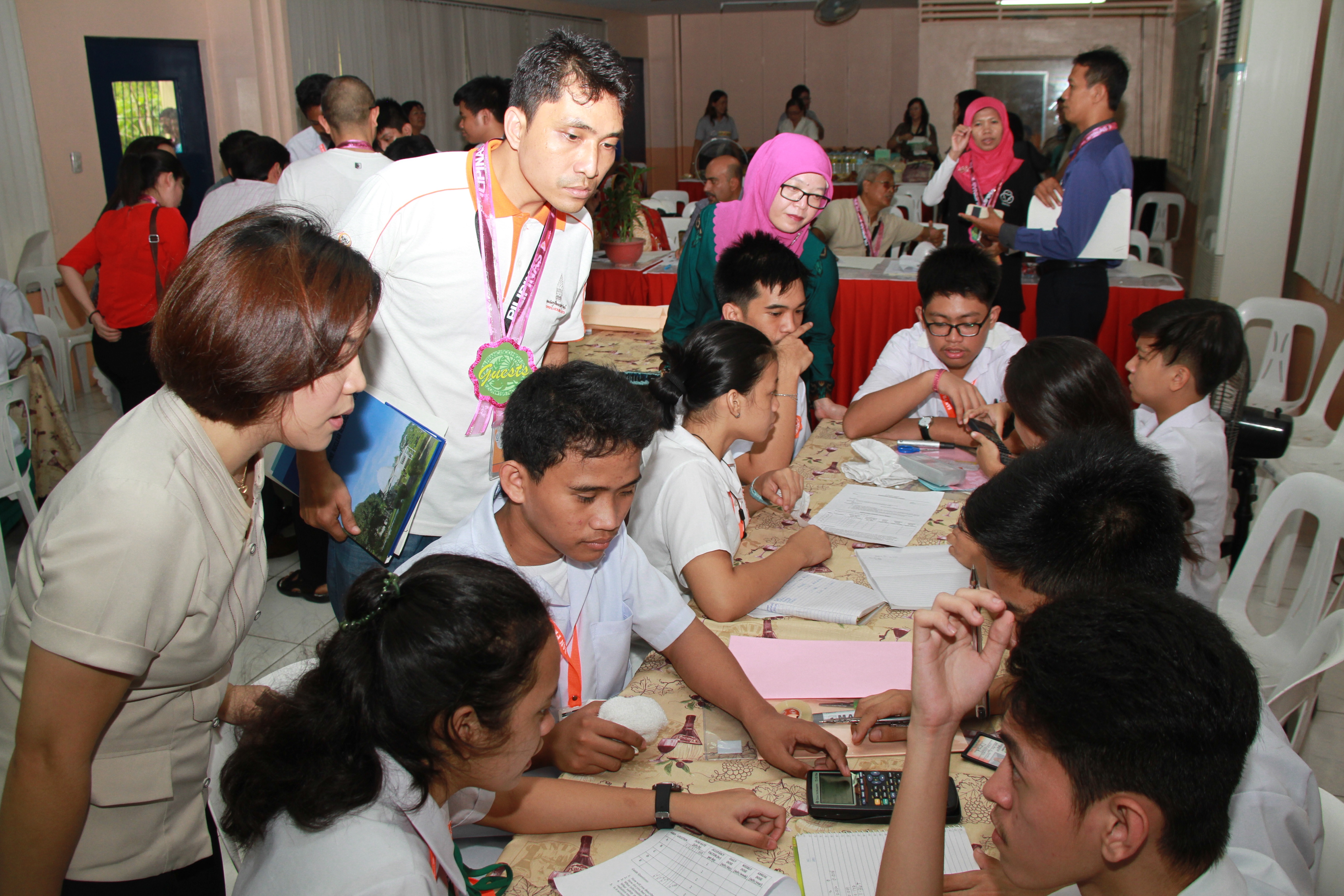
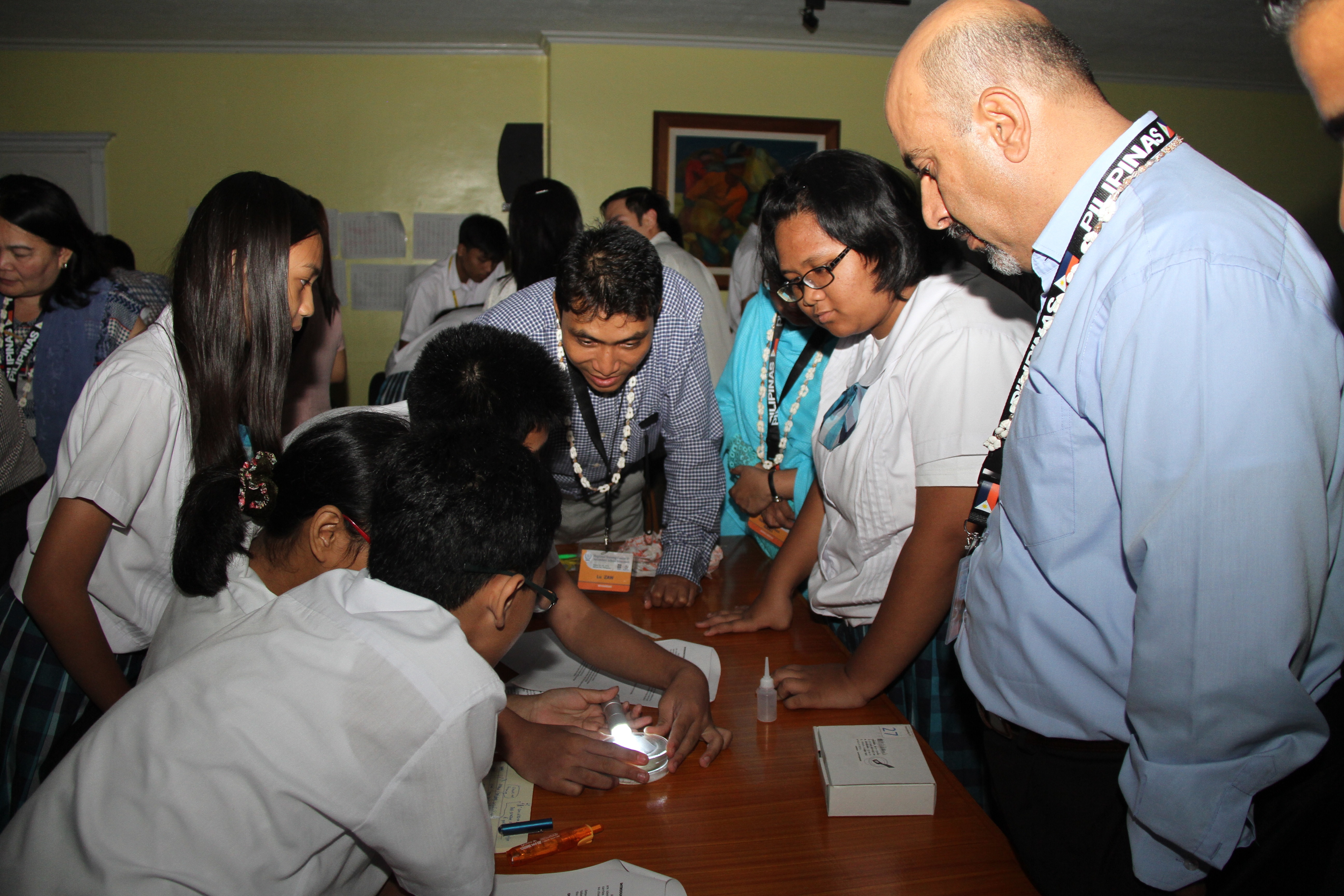
The participant teachers observe the class demonstration and radiation detection experiments by teachers and students from San Francisco High School (left) and Quezon City Science High School (right)
Philippines Hosts Asian Educators to Bring Nuclear S&T to Secondary Schools
Teachers and educators throughout the Asia-Pacific region met in the Philippines as part of the international effort to bring nuclear science to classrooms as it hosts the Regional Training Course for Secondary School Educators from August 22-26, 2016.
The course was organized by the International Atomic Energy Agency (IAEA) in cooperation with the Department of Science and Technology – Philippine Nuclear Research Institute (DOST-PNRI) and the Department of Education Division of City Schools – Quezon City (DepEd – QC).
The training course supportedthe secondary school science educators in Member States in developing their competency in delivering nuclear science and technology topics as effective and engaging teaching learning processes. The week-long event also fostered a healthy discussion on the experiences and strategies of various countries in the Asia-Pacific region in integrating nuclear S&T in their curriculum to meet their national perspectives.
Among the participants were government officials and science educators from Bangladesh, Jordan, Pakistan, Philippines, Israel, Thailand, Vietnam, Myanmar, Sri Lanka, Malaysia and Indonesia, who trained on new approaches that will make teaching complex concepts such as nuclear energy and radiation more enjoyable and understandable. Ms. Rhodora Leonin of the PNRI Nuclear Information and Documentation Section is the Course Director.
Lecturers from the IAEA shared their expertise in teaching as well as promoting nuclear S&T to the younger generation. Several teachers from two pilot schools in Quezon City – San Francisco High School and Quezon City Science High School – also performed classroom demonstrations during the training course.
These teachers were previously trained in conducting lectures and radiation-related activities like the cloud chamber experiment, which allows students to “see” radiation through the trails left by emitted particles, and using the Hakaru-kun radiation detector in the environment, courtesy of the IAEA and the University of Tokyo.
Not to be outdone, the high school students from both pilot schools showcased their creative talents combined with what they have learned from the previous seminars to promote nuclear S&T applications.
In 2015, the Philippines served as one of the pilot countries for the project along with Malaysia, Indonesia and the United Arab Emirates. It aims to reach out and develop the interests of young students in the field of science and technology, with an emphasis on the peaceful and beneficial uses of nuclear and radiation applications.
The project also aims to encourage students to eventually take up science-related courses in college as well as their professional careers, which will augment the manpower and technological development of the IAEA Member States in the region.
“Students cannot go into these fields unless they know they exist,” said IAEA Technical Officer Dr. Sunil Sabharwal in an interview with the IAEA.
“We are afraid of things we don’t understand. Science, technology and maths are not subject areas students usually feel close to. We need teachers who can show them that these aren’t difficult, but actually interesting.”












































